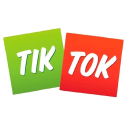How I Started A Bakery Business In Brooklyn During Peak Covid That Now Makes $30K In Annual Revenue
Hello! Who are you and what business did you start?
Hi! My name is Gaza, the founder a lead baker of Moco Choco! Moco Choco is a private bakery in Brooklyn, NY that specializes in custom cakes, cookies, and chocolates. I started Moco Choco at the beginning of 2020.
Yes, I know, worst timing ever. But after years of a hard, uphill slog, I’ve gotten to experience the euphoria of my business not only making money but of my dream to be a chocolatier and baker in New York City coming true!
At Moco Choco, we’re known mostly for our custom cakes though we do also make customizable cookies and chocolates. I wanted to give Brooklyn high-quality cakes, but with an eye for colorful design and craftsmanship that they wouldn’t find at the normal local bakeries that dot the street corners.
Fast forward a couple of years, and I’ve baked hundreds of cakes, each one uniquely custom, for everything from weddings to citizenship parties, and have managed to reach more than $30,000 in annual revenue.

Download the report and join our email newsletter packed with business ideas and money-making opportunities, backed by real-life case studies.

Download the report and join our email newsletter packed with business ideas and money-making opportunities, backed by real-life case studies.

Download the report and join our email newsletter packed with business ideas and money-making opportunities, backed by real-life case studies.

Download the report and join our email newsletter packed with business ideas and money-making opportunities, backed by real-life case studies.

Download the report and join our email newsletter packed with business ideas and money-making opportunities, backed by real-life case studies.

Download the report and join our email newsletter packed with business ideas and money-making opportunities, backed by real-life case studies.

Download the report and join our email newsletter packed with business ideas and money-making opportunities, backed by real-life case studies.

Download the report and join our email newsletter packed with business ideas and money-making opportunities, backed by real-life case studies.




























